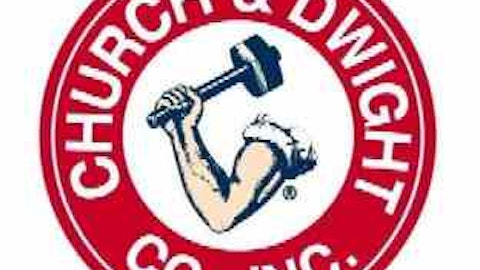 Trouble is brewing in the Western economies again.
Trouble is brewing in the Western economies again.
The U.S. economy is growing slowly at best, while the European economy is still contracting. European consumer confidence is still very low, and housing markets are worrisome. The average European is cutting back on their expenditure and is rather saving money than spending it.
This means that companies relying on these markets for much or all of their revenue can do little more than cut costs and protect market share.
If you’re a large company that wants to grow even larger, you need to be present in the emerging markets. The so-called BRIC countries (Brazil, Russia, India and China) and many other developing economies are growing at a fast clip. They have young, dynamic populations that are working hard and growing wealthier every year.
But rather than risk your money by investing directly in these volatile economies, why not hedge yourself with exposure to developed and emerging-market economies using one investment?

Founded in 1930, Unilever is the world’s third-largest consumer goods company (after The Procter & Gamble Company (NYSE:PG) and Nestle SA Reg Shs. Ser. B Spons (PINK:NSRGY)) and the world’s largest maker of ice cream. Unilever N.V. (ADR) (NYSE:UN) has nearly 400 brands in its portfolio of foods, beverages and personal care products. It owns several billion-dollar brands, including Ben & Jerry’s, Dove, Lipton and Wish-Bone.
When it comes to taking advantage of both the stability of developed markets and the growth potential of emerging markets, Unilever’s management is fully aware of the opportunity.
Sales in developed markets have grown marginally in recent years, with profit margins stabilizing above 14%. In contrast, sales in emerging markets surged 11.4%. Sales in emerging markets already count for 56% of Unilever N.V. (ADR) (NYSE:UN)’s total sales, and at the current growth rate, Unilever will be less dependent on the stalling developed markets.
Sales in Asia, the Middle East, Turkey, Africa, Russia and Ukraine have surged by almost 10% a year since 2003 to an annual total of $37 billion. Unilever N.V. (ADR) (NYSE:UN) is expanding its 52% stake in Hindustan Unilever (its India-based operations) to 75% to capitalize on India’s fast-growing middle class. Analysts expect Unilever to grow another 6% to 10% this year due to its strong presence in the emerging markets.
Even better, while most investors might be tempted to go with a stock like The Procter & Gamble Company (NYSE:PG) as a play on this thesis, I think Unilever N.V. (ADR) (NYSE:UN) is a better opportunity for investors.
For starters, it isn’t as well known to U.S. investors as The Procter & Gamble Company (NYSE:PG). That puts it under the radar — exactly where I like my investments. I find that the less well-known an investment is, the better my chances of making market-beating gains before the crowd catches on (provided the idea is good and the company executes, of course).

Unilever has nearly 400 brands in its portfolio of foods, beverages and personal care products. It owns several billion-dollar brands, including Lipton.
In comparison, the case is clearly in Unilever’s favor. The Procter & Gamble Company (NYSE:PG)’s sales grew only 3% last year while Unilever’s growth was 10.6%, thanks to its strong presence in the emerging markets. Another reason for preferring Unilever N.V. (ADR) (NYSE:UN) over The Procter & Gamble Company (NYSE:PG) is Unilever’s ratio of net debt to EBITDA (earnings before interest, taxes, depreciation and amortization) is only 1.1, which means there is enough room for capital investments and share buybacks.
Also in Unilever’s favor is the aggressive growth path that management has introduced. The target is to double sales and increase its social impact while reducing the environmental footprint. Unilever N.V. (ADR) (NYSE:UN) has been chosen as sector leader in the Dow Jones Sustainability Index for the 14th consecutive year. Unilever’s price-to-earnings (P/E) ratio has is nearly 20 (compared with P&G’s 18.4), but its strong growth prospects fully justify this.
Most of Unilever’s solid brands have hardly been hit during the financial crisis. Only sales in Europe declined, but that has been more than compensated by the stormy growth in emerging markets.
One very important factor for Unilever N.V. (ADR) (NYSE:UN) is the cost of raw materials. Palm oil, coffee and sugar are ingredients used in many of its products. Last year, Unilever had to take a one-time charge-off of $2 billion because of higher-than-expected soft commodity prices.
This year, commodity prices have been declining. Most commodities peaked in the summer of 2011 and are still sliding, albeit slowly. Sanford Bernstein analysts estimate that Unilever’s core operating profit could rise 30 basis points to 14%. But the price of sugar is coming down, and that is good news for Unilever N.V. (ADR) (NYSE:UN). Of course, like all food companies, Unilever is continuously hedging the swings in raw materials, but the trend is down, which should benefit its margins.

Unilever N.V. (ADR) (NYSE:UN) is not a stock you should buy for a quick scalp. It is a defensive investment that provides its shareholders with a nice dividend each year. Unilever’s dividend yield is currently 3.4%, but it has grown by 30% since 2009.
Risk to Consider: Rising commodity prices could hurt Unilever’s profit. Slight price increases could easily be passed on to consumers but bigger movements could be costly.
Action to take –> Unilever N.V. (ADR) (NYSE:UN) is growing fast in the emerging markets, and commodity costs are declining. This makes Unilever a great defensive stock to add to your portfolio.
Warren Buffett’s Top 5 Stocks
Buffett’s firm, Berkshire Hathaway, holds dozens of stocks. But these five make up 75% of its portfolio… worth $65 billion. Click here to get Buffett’s top 5 stocks plus his 16 latest buys, FREE.
This article was originally written by Nico Inberg and posted on StreetAuthority.




